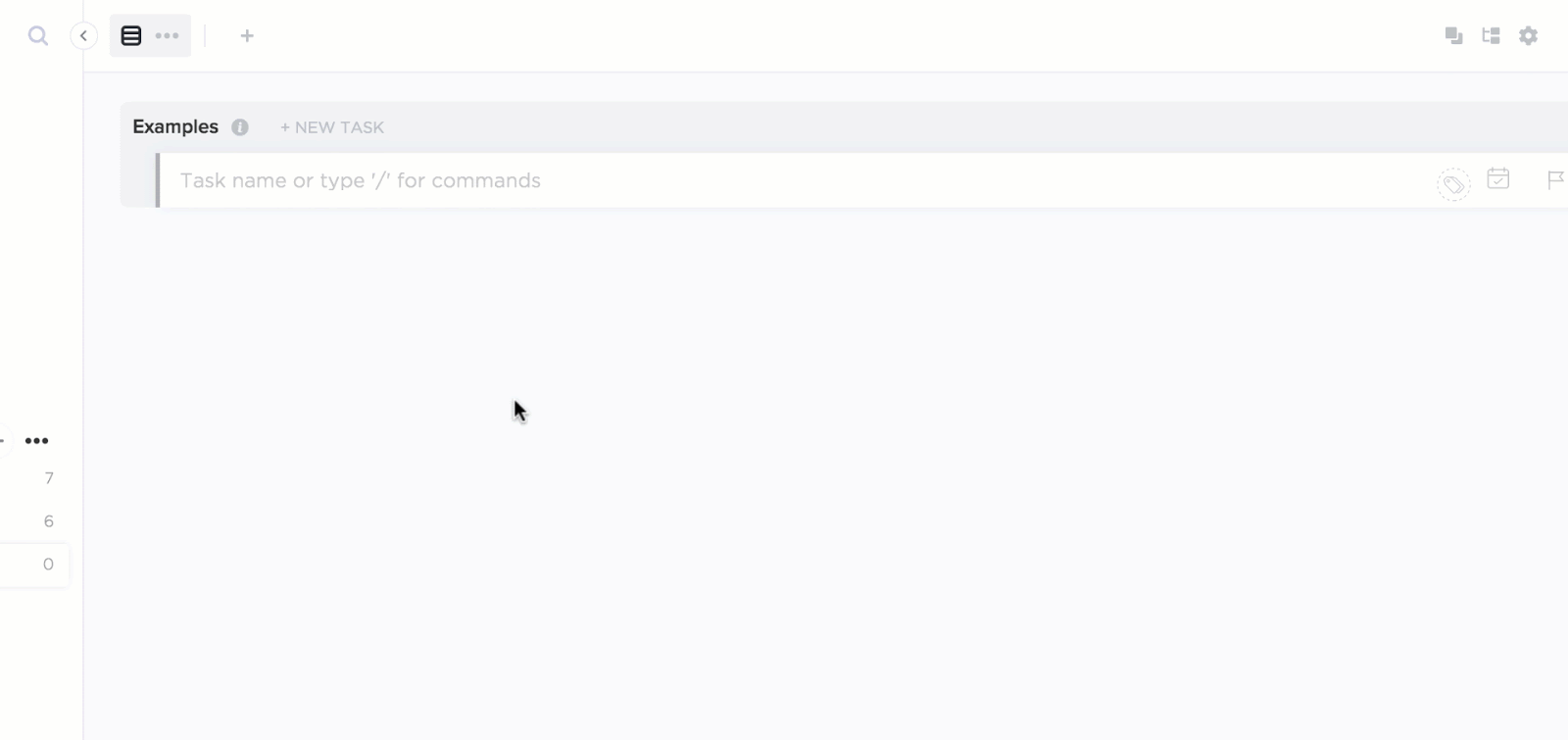
Measurable Objectives & Goals Examples 2023
Looking for a crash course on measurable objectives?
In this article, you’ll be learning everything you need to know about goals and measurable objectives.
We’ll cover what they are, the different types of measurable objectives, and the best tool to help you manage them.
And to liven things up, we’ll be going on a field trip!
We’ll visit Initech, a fictional software company from the movie ‘Office Space’, to see how measurable objectives can impact every business unit in your company.

Let’s get this started!
What Are Goals and Objectives?
A goal is an intended outcome that you want to achieve while objectives help your team understand what needs to be done in order to achieve the intended outcome.
Let’s take a quick look at what goals and objectives are. If you’ve already been learning about goals, objectives, and strategies, you can skip ahead to the next section.
But for everyone else, let’s brush up our knowledge over these terms:
A. Goals
A goal is an intended outcome that you want to achieve.
For example:
Initech’s desired outcome is to increase annual profits.
However, all goals do is give you a final destination – they don’t tell you how you’re going to get there.
Does that mean goals are meaningless… like those annoying T.P.S. reports in the movie?

Of course not!
Goal setting is important because it helps your team focus and understand what they’re working towards. This can help them adapt their behavior to the situation – resulting in a behavior change where they’re more motivated to achieve the goal.
And we’re not the only ones talking about this performance and behavior change:
According to a behavior change study, goal setting improves participant performance by 12 to 15% – when compared to the situation where no goals were defined!
B. Objectives
Objectives help your team understand what needs to be done in order to achieve the intended outcome (goal).
They are specific statements that have a set target that your teams need to reach.
For example:
Initech’s goal was to increase annual profits.
In order to do that, Initech might need to set an objective of ‘increasing sales over the next quarter by 5%.’
This way, by boosting sales, they’ll be able to increase profits and meet their intended outcome.
Read more about the differences between objectives and goals.
C. Strategy
Once you’ve laid out the objectives – you need to figure out an action plan to tackle them.
That’s where your strategy comes in.
Goals and objectives are about ‘what’ you want to do and need to achieve.
Strategy is about the how.
You could do many things to reach an intended goal. Strategy is about the choice you make from multiple options to reach that goal.
A strategy is a series of tasks you need to perform in order to achieve an objective.
For example:
Initech’s sales strategy and action plan could include:
- Creating a new social media marketing campaign to attract more customers
- Analyzing their customer’s social media interactions and behavior to identify the best leads
- Lowering their prices to make their products more attractive
- Employing two additional salespeople to target former customers – like these two:

What Are Measurable Objectives?
Measurable objectives are objectives that can be tracked with the help of units, numbers, and figures. Before we talk about measurable objectives, we need to get SMART, literally.
Remember, an objective needs to be carefully thought out and selected to be effective.
And how do we do that?
With the help of the SMART framework!
The SMART format is an acronym for how your objectives should be: Specific, Measurable, Attainable, Relevant, and Time bound.
Here’s a breakdown of the SMART format and what ideal objectives should be:
Specific
Does the objective narrow down what needs to be done?
Measurable
Can you easily measure and track your objective to see if you’re close to success?
Attainable
Is your objective realistic enough to be achieved?
Relevant
Is your objective important to the mission of your business?
Timed
Does your objective have a deadline?
While an ideal SMART objective should satisfy all five of those conditions, we’ll only be focusing on measurable objectives here.
So what are measurable objectives?
Measurable objectives are objectives that can be tracked with the help of units, numbers, and figures.
Why are they important?
- They help you easily track how you’re progressing and identify if anything’s going wrong in achieving your desired outcome
- As they’re measurable, they can motivate your team by showing them how close they are to completing the objective
What’s an example of a good measurable objective?
Let’s go back to Initech’s objective of ‘increasing sales by 5% over the next quarter.’
That’s a good measurable objective example as it mentions a clear, specific figure that can easily be calculated.
How will they measure their progress over this objective?
Step 1:
Each time they make a sale or a purchase order, the team records the sales data, such as number of units sold and price of each unit.
Step 2:
At the end of the quarter, they calculate the total sales revenue generated by the team.
Step 3:
Then, they compare this value with that of the previous quarter, to see if they’ve met their objective.
It’s that simple!

3 Measurable Objectives Examples
Measurable Objectives vary per department such as product development, marketing, and HR. To reach an overall company goal, every department has to create their own objectives for their business processes.
It’s just like the game of Tetris:

Just like how each block has to be aligned to create a line, each department has to align their objectives to reach the overall company goal!
As previously mentioned, Initech’s goal was to increase annual profits.
That means each department has to create a set of objectives that are measurable to contribute to that company goal.
Let’s take a look at the measurable objectives each department can create to contribute to it!
1. Product development objectives
Unless you’ve been working in a basement like Milton, you’ll know that most businesses earn the bulk of their revenue from their products and services!

Here are a few examples of measurable product development objectives that can help increase revenue:
- Diversify offerings by introducing 2 new language learning tools
- Launch 1 online course learning program this year
- Reduce production costs of web analytics software by 10%
- Speed up assessment tool production by 30%
- Discontinue further development of 2 unprofitable software
- Lower accounting software expenses by 20% using a QuickBooks alternative
2. Marketing and sales objectives
A sales and marketing team without a measurable objective is like a boat without a paddle.
Without a way to control the boat, it floats without direction.
And that’s going to be your team’s fate too!
Give your team a paddle in the form of measurable objectives, and they’re sure to steer the company towards success!
Tip: Your marketing and sales reports should serve as a workable roadmap to get these campaigns off the ground.
Here are a few sample marketing objectives that Initech’s sales and marketing team should have in order to increase profits:
- Gain 1000 new leads within a month
- Convert 10% of website visitors into leads via forms
- Rank in the top 3 results for a target keyword, as measured by a SERP tracking tool
- Increase number of repeat customers by 15% with the help of a marketing plan
- Grow the company’s social media following by 20%
- Spend at least $2000/month on digital marketing efforts
- Launch a new summer marketing campaign
3. HR & training objectives
Your HR professionals are more crucial to the company’s success than you think!
Besides selecting new hires, the HR team ensures that the team is productive and motivated to avoid situations like this:

They can also create and measure SMART objectives for your employees’ growth and management. These can cover things like learning goals, changing observable behaviour, and other activities.
And once these objectives are met, they can directly impact the company’s growth!
Let’s take a look at a few examples of measurable HR objectives that can increase profitability:
- A measurable learning objective like skill up 10 employees to meet production demands
- Increase employee satisfaction by 30% by the end of the year
- An instructional objective, like introducing 2 new skill training policies
- Hire 3 quality control experts to help with high skill QC work
- Hire 2 student / learner interns
- A learning objective like increasing employee knowledge in 2 particular domains
- Plan a team-building activity for more collaborative employee behavior
- Track performance output of 20 new employees
Learn about the best HR Tools!
How To Measure Your Objectives
According to a recent report on the State of High Performing Teams, discussing goals weekly or biweekly increases confidence in hitting them by 2.7 times! So while it’s great to set measurable objectives for your team, you’ll still have to track these objectives to easily reference during your discussions!
If you don’t – then your objectives would be as pointless as those T.P.S. reports.
It’s like creating an exercise and weight training routine for yourself, and then skipping the gym altogether!
But how do you go about tracking your progress?
Use a progress tracking dashboard in a tool like ClickUp!
It’s got all the features you need to easily monitor your measurable objectives and ensure smooth progress.
Here’s a closer look at how you can use it!
How to create and track measurable goals & objectives in ClickUp
If you want to create and track measurable objectives in ClickUp, all you need is the Goals feature!
Here’s how to use it to set different types of goals and objectives:
A. Team Goals
In ClickUp, Goals are high level containers that can be broken into smaller Targets.
These Targets play the same role as measurable objectives. So when you complete them, you’ll achieve your SMART goal too!
Here’s how you can create and manage project Goals in ClickUp.
Step 1
Click on the ‘Goals’ button and then enter something that you want your team to achieve.
For example:
After a recent downsizing at the company, Peter’s boss, Bill Lumbergh, wants his team to boost productivity so that revenue doesn’t drop.
So his Goal would be to increase the team’s productivity.

Step 2
After you’ve set the Goal, it’s time to assign it to your team members.

Step 3
Now that you’ve set the Goal, it’s time to create the objectives.
As mentioned earlier, in ClickUp, a SMART Objective = Target.
So just add your Targets that’ll help you meet your measurable goals.
And since these Targets need to be measured, you can choose from a variety of units such as:
- Numbers: Any number from 0 to ∞
- True/False: Has a condition been met or not met?
- Currency: Any value of currency
- Tasks: Tasks or a list of tasks that you need to do
So here are the Targets that Bill has set for the team, especially Peter:
- Put in work over 7 weekends
- Fill out cover sheets of the T.P.S. reports

After you’ve set each Target, you can go on to assign each one to different team members.
Just create a ClickUp task for each target and you are set.

Step 4
Now, your team can start tackling each Target to meet your measurable goals and objectives. At the end of the day, team members can update their ClickUp Targets on their own.
Here’s the best thing about this feature:
Managers like Bill don’t have to show up to their team’s workspace and ask the same question over and over again:

Instead, ClickUp shows them ‘what’s happening’ in real-time.
ClickUp automatically calculates the goal progress percentage based on your Target completion. This removes the need for unnecessary communication!

It doesn’t matter if it’s a productivity goal or even a learning activity related to the cognitive domain – ClickUp’s Goals will help you manage everything from weekly goals to stretch goals.
B. Sprint Goals
Since Initech is a software company, they might be using Agile project management techniques.
And if you’re managing an Agile team, you would need a tool to monitor the progress of your Agile & Scrum sprints.
Fortunately, the Goals feature can also be used to track sprint goals. Since ClickUp allows you to add a task list as a target – you can add the product backlog tasks that tie into your backlog goal.

This way, whenever you check off a task, the sprint progress percentage increases – which can motivate your team to crush even more tasks.
Note: If you manage an Agile team, you can also use ClickUp’s Dashboards to keep track of your progress. You get access to Burndowns, Burn Ups, Cumulative Flow Diagrams, and Velocity Charts.
C. OKRs
Objective and Key results (or OKR) is a goal setting framework used to set measurable goals and objectives for their companies.
It breaks down SMART goals into a set of key results that’ll help you meet that objective.
In OKR terminology, the word objectives refers to your goals. And key results translate into your objectives.
So when using OKRs in ClickUp:
- Goals = objectives
- Targets = key results
Basically, it’s an alternate way of saying that the framework allows you to set goals and create objectives/targets for them.
And since the only difference here is terminology, you can follow the same steps we outlined in the ‘Team Goals’ section to manage your OKRs.

Note:
Don’t confuse OKR with KPI (Key Performance Indicators). OKRs help you track your goals, while a KPI is a metric that measures your performance over an ongoing task or activity.
For example, an OKR objective could be “reduce employee turnover by 5%” – while the KPI for this would be “employee turnover rate” as it’s the metric you’re using to measure your objective.
And that’s not all of ClickUp’s features!
Here are a few more features that can level up your business:
- Comments: Helps you improve team communication
- Project Management Automation: Automate repetitive processes to save time
- Docs: Allows you to share knowledge with your team for training purposes
- Reports: Monitor and record team activity and performance
- Time tracking: Track time taken to complete tasks
- Pulse: Identify the tasks your team is focused on at the moment
This way, you’ll have complete control over all your project objectives and goals – even if your team is working remotely!
Bonus: SMART Goals for Students
Conclusion
Setting measurable objectives is one of the easiest ways to hold your team and company together.
How?
They give you feedback on how you’re progressing and what’s left to be done.
Without them, your company’s going to lack focus – and won’t know how to achieve any of their professional goals.
This is what your team would look like without any objectives:

And this is what your company will be like when you’ve defined measurable objectives:

But simply setting measurable objectives isn’t going to help your company!
You need a way to track those objectives and set up an action plan for every business unit too.
Let ClickUp be your productivity partner, and try it for free today!
It has all you need to level up your team’s objective tracking efforts to achieve any desired outcome you want.

Questions? Comments? Visit our Help Center for support.